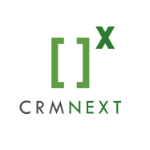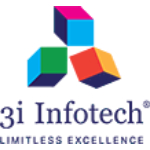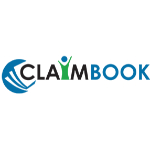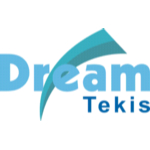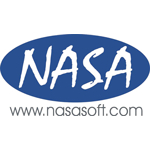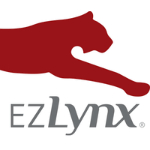TechnologyCounter provides genuine, unbiased real user reviews to help buyers make informed decisions. We may earn a referral fee when you purchase through our links, at no extra cost to you.
List of 15 Best Insurance Software
Showing 1 - 15 of 111 productsCRMNEXT is a solution to streamline and enhance your customer relationship management. With its advanced features and user-friendly interface, CRMNEXT is designed to help businesses effortlessly manage and nurture their customer interactions, leading...Read CRMNEXT Reviews
Premia is a all-in-one software solution for your business needs. With its robust features and user-friendly interface, Premia simplifies your operations and streamlines your workflow. Say goodbye to outdated systems and hello to a more efficient way...Read Premia Reviews
Artivatic is a software that combines the power of artificial intelligence and data analytics to provide highly personalized, data-driven solutions for businesses and individuals. With its innovative technology, Artivatic is paving the way for smarte...Read Artivatic Reviews
Attune ClaimBook is a all-in-one solution for managing insurance claims with ease and efficiency. This innovative software streamlines the claims process, allowing users to quickly and accurately process claims, track progress, and analyze data. Say...Read Attune ClaimBook Reviews
Hello and SohamLife! A revolutionary software designed to transform the way we live our lives. As a highly versatile and user-friendly platform, SohamLife offers a wide range of tools and features to help individuals effectively manage their daily ta...Read SohamLife Reviews
KAEM-Insurance is an innovative software designed to efficiently manage and track the entire process of an Auto Insurance Claim. With its advanced functionality, it keeps a record of every stage of the claim, ensuring timely payments and sending remi...Read KAEM-Insurance Reviews
Eclipse AMS is a leading software for asset management in todays fast-paced business landscape. With its powerful features and user-friendly interface, Eclipse AMS streamlines asset tracking, maintenance, and reporting, making it a must-have for any...Read Eclipse AMS Reviews
Jenesis Insurance is more than just a software, its a revolutionary tool designed to transform the insurance industry. With its user-friendly interface and innovative features, Jenesis Insurance streamlines processes, increases efficiency, and boosts...Read Jenesis Insurance Reviews
Applied Epic the all-in-one solution for insurance agencies! This robust software offers an array of features designed to streamline and modernize your agencys operations. With seamless integration, detailed reporting, and convenient cloud-based acce...Read Applied Epic Reviews
NowCerts is the complete solution for all your insurance agency management needs. This innovative software streamlines and automates your workflow, making it easier than ever to manage policies, client information, and commissions all in one place. W...Read NowCerts Reviews
AgencyBloc the all-in-one solution for managing your insurance and financial services agency. Say goodbye to chaos and hello to streamlined operations with our intuitive, user-friendly platform. From client management to commission tracking, AgencyBl...Read AgencyBloc Reviews
HawkSoft CMS is a robust content management system that streamlines website management and empowers businesses to create and update dynamic online experiences with ease. With its intuitive interface and versatile tools, HawkSoft CMS is a game-changer...Read HawkSoft CMS Reviews
EZLynx is a solution for all your insurance management needs. With its user-friendly interface and robust features, EZLynx simplifies and streamlines the process of managing insurance policies. Designed to make your work easier and more efficient, EZ...Read EZLynx Reviews
Insly is a leading software solution designed to streamline and simplify the management of insurance policies and claims. With its user-friendly interface features, Insly empowers insurance companies of all sizes to increase efficiency, reduce errors...Read Insly Reviews
Surefyre is a solution for all your business management needs. Designed to simplify and streamline your operations, Surefyre offers a range of versatile features that will help you stay organized is a . With its user-friendly interface and powerful t...Read Surefyre Reviews
- What Is Insurance Software?
- Top Reasons Why Businesses Need Insurance Software?
- What Are the Top Key Features of Insurance Software?
- What Are the Top Benefits of Insurance Software?
- What Are the Steps to Choose the Right Insurance Software?
- What Are the Types of Insurance Software for Different Industries?
- What Are the Technology Trends for Best Insurance Software?
- What Are the Deployment Options for Insurance Software?
What Is Insurance Software?
Insurance software refers to a category of technological solutions employed for the purpose of effectively overseeing and streamlining insurance-related activities and processes.
This particular software is commonly developed with the purpose of assisting insurance companies, brokers, and other affiliated insurance enterprises in automating and optimizing their processes, hence enhancing efficiency and profitability. The software possesses the capability to fulfill a diverse range of duties, including but not limited to the gathering of customer quotes, management of policies, and processing of claims.
Additionally, top insurance management systems has the capability to offer valuable analytics and business insights, thereby aiding insurance businesses in making more informed decisions. In general, top insurance software solutions are developed with the purpose of assisting insurance enterprises in maintaining order, enhancing financial gains, and fulfilling customer requirements.
Top Reasons Why Businesses Need Insurance Software?
1. Minimize the utilization of physical documents and manual procedures.
2. Optimize the efficiency and organization of quotes, invoices, and policy documents.
3. One potential strategy for enhancing customer satisfaction involves improving the accuracy and expediency of quotation processes.
4. One potential approach to enhancing service efficiency and accuracy is through the implementation of automated workflows and processes.
5. One of the primary objectives of top insurance management systems is to minimize the negative impact resulting from unforeseen circumstances and guarantee adherence to established regulations.
6. In order to enhance operational efficiency, it is imperative to optimize and closely oversee the procedures involved in the processing of claims.
7.One of the key objectives is to facilitate secure online payment transactions and expedite the process of client onboarding.
8. Conduct a comprehensive analysis of the data in order to identify specific areas where improvements can be made and potential cost reductions can be achieved.
9. One such approach to enhance efficiency and improve customer satisfaction is through the automation of renewal processes and customer communication.
10. Facilitate the capacity of brokers to offer more customized advice and services.
11. Enhance client loyalty with the provision of immediate access to policies and information in real-time.
12. Enable the dissemination of product brochures, forms, and other informational resources.
13. One potential strategy for enhancing retention rates is to promptly handle customer inquiries and requests.
14. The ability to conveniently monitor and assess client policies, status, and payment history.
15. Notify brokers in a timely manner when significant events or milestones take place.
What Are the Top Key Features of Insurance Software?
The key features of top insurance management systems can vary greatly depending on the product or service, but some of the most common features include:
1. Quoting Tool: The insurance management software facilitates the prompt and effortless retrieval of rates and offers from brokers or insurers for customers.
2. Document Management: This functionality enables users to securely store and effectively manage policy-related papers, including claims forms, payment information, and other relevant materials.
3. Reporting & Analytics: This particular functionality offers valuable insights into consumer data, facilitating the monitoring of patterns, identification of potential areas for growth, and enabling the formulation of well-informed judgments.
4. Billing & Payments: This functionality facilitates the prompt and effortless payment of premiums by clients on their insurance policies.
5. Claims Processing & Management: Top Insurance software has the capability to establish integration with various systems, hence enabling the automation of claims processes and the efficient management of workflow.
6. Policy Administration: Policy administration tools provide users with the ability to develop policies, effectively manage the processes of policy renewals and cancellations, and make necessary updates to policy information.
7. Underwriting & Risk Management: Insurance software plays a crucial role in streamlining underwriting and risk management procedures by facilitating the automation of many tasks, including the identification and mitigation of fraudulent claims.
8. Customer Service Portal: The customer service portal facilitates the submission of enquiries and requests for assistance by customers, while also providing them with access to pertinent information regarding the policies in place.
9. Integration with Third-Party Systems: Insurance software frequently has the capability to establish integration with many third-party systems, including but not limited to email providers, databases, and accounting systems.
10. Data Security: The implementation of security measures is crucial in guaranteeing the secure storage and protection of client data.
What Are the Top Benefits of Insurance Software?
1. Improved Efficiency - Insurance software solutions serves to simplify and optimize many procedures related to the administration, growth, and representation of an insurance portfolio. This facilitates the process of agents establishing connections with clients, evaluating potential risks, and meeting coverage obligations.
2. Enhanced Connectivity - The utilization of the best insurance management systems enhances the level of visibility and facilitates the accessibility of customer information, so enabling a team to maintain interconnectedness with both their colleagues and clients. This facilitates the establishment of a more cohesive and integrated consumer experience.
3. Expanded Client Reach - Top Insurance software eliminates the geographical constraints inherent in conventional insurance businesses, so enabling agents to conduct operations on a national scale.
4. Increased Data Security - Insurance management software is designed to minimize the reliance on physical paper paperwork and instead provide a safe means of storing information digitally.
5. Improved Underwriting - Insurance software solutions enables agents to effectively evaluate risk profiles and ascertain eligibility for coverage.
6. Reduced Costs - Insurance management software effectively streamlines and automates many administrative procedures that are often involved in the management of an insurance portfolio. This leads to a reduction in the quantity of human resources needed, leading to cost savings.
7. Automated Task Management - Insurance management software enables reps to streamline many responsibilities, including but not limited to approval procedures, document processing, and claims payouts.
8. Streamlined Claims Processing - Insurance software enhances the claims processing procedure by facilitating streamlined and transparent data monitoring. This phenomenon leads to a decrease in the duration required for the resolution of legal proceedings.
9. Real-Time Analytics - Insurance software enhances the claims processing procedure by facilitating streamlined and transparent data monitoring. This phenomenon leads to a decrease in the duration required for the resolution of legal proceedings.
10. Improved Customer Service - The utilization of the best insurance management systems facilitates the expeditious retrieval of customer profiles by representatives, so enabling them to promptly address consumer inquiries and demands. This phenomenon leads to an enhancement in customer satisfaction and a rise in customer retention rates.
What Are the Steps to Choose the Right Insurance Software?
1. Identify the insurance business model: It is imperative to ascertain the precise insurance business model that your corporation operates under, as this will facilitate the process of narrowing down the available choices and subsequently selecting the most suitable software solution to meet your specific requirements.
2. Consider key features needed: The user is advised to determine the particular attributes and functionalities required from the program, including but not limited to customer service, user-friendliness, extensive coverage, pricing alternatives, reporting capabilities, and additional features.
3. Evaluate and compare different options: Conduct a comprehensive analysis and comparison of top insurance software platforms, taking into consideration your own demands and specific requirements. The objective is to generate a concise selection of alternatives that appear to be the most appropriate for the firm, with the purpose of carrying out a more comprehensive assessment.
4. Develop a series of evaluations: Conduct a comprehensive examination of the best insurance management systems solution, delving into its intricacies, and subject it to a battery of tests to ascertain its suitability for your specific needs. This study aims to assess the usability, responsiveness of customer support, and the features and functionalities of the product.
5. Review user feedback: To enhance comprehension of the advantages and disadvantages linked to each software solution being contemplated, it is advisable to peruse web reviews and customer comments.
6. Analyse cost of ownership: Evaluate the expenses related to acquisition and upkeep, along with any additional charges, in order to ascertain the feasibility of incorporating it into your enterprise.
7. Choose the right solution: It is advisable to make conclusive determinations by considering the entirety of the study and experimentation conducted, and thereafter selecting the solution that most effectively fulfills the requirements of the organization.
What Are the Types of Insurance Software for Different Industries?
The diversity of insurance software platforms is contingent upon the particular business they cater to. The best insurance management systems utilized in the health care sector encompass several components such as electronic medical records (EMR) and electronic health records (EHR) applications, claims processing software, and patient self-service portals.
In the life and property & casualty (P&C) insurance sector, insurance management software encompasses a range of applications such as policy administration, billing and claims adjustment systems, online payment portals, agent portals, and underwriting software.
The reinsurance and insurance brokering industry can benefit from implementing various technologies, such as policy administration systems, client portals, and 360-degree customer view dashboards.
The top insurance management systems utilized by insurance brokers and agents encompass a range of functionalities, such as customer relationship management and sales automation tools, alongside web-based platforms designed to promote and advertise their professional offerings.
In conclusion, the best insurance management systems catering to insurance companies encompass a range of essential components such as customer relationship management (CRM) systems, financial management systems, compliance management software, and analytics tools.
What Are the Technology Trends for Best Insurance Software?
The technology trends for the best insurance software solutions include:
1. Cloud technology: Cloud technology facilitates the storage, management, and analysis of extensive volumes of data for insurance businesses, offering advantages in terms of efficiency, cost-effectiveness, and security.
2. Artificial Intelligence (AI): Artificial intelligence (AI) and machine learning (ML) technologies are already being employed to automate formerly manual procedures, mitigate instances of fraudulent claims, and enhance both customer service and decision-making capabilities.
3. Internet of Things (IoT): The integration of physical device sensors enables insurance companies to gain enhanced insights into the behaviors shown by their customers, hence facilitating more accurate assessment and pricing of risks.
4. Cybersecurity: The significance of cyber insurance plans is growing due to the escalating frequency and financial impact of data breaches. It is imperative for insurance businesses to effectively safeguard their customers' data and shield them from associated vulnerabilities.
5. Smart Contracts: The utilization of smart contracts is increasingly gaining prominence as a robust solution for the automated execution of insurance contracts and claims processing. Automated payouts and a streamlined claims process are implemented, resulting in enhanced operational effectiveness and heightened levels of consumer contentment.
What Are the Deployment Options for Insurance Software?
The deployment options for top insurance software are as follows:
1. On-premise: The present scenario involves the implementation of the software within the confines of an organization's internal infrastructure, specifically on the company's servers. The establishment of this system typically necessitates substantial investment and expenditure, as well as the need for a considerable level of technical proficiency in its administration.
2. Cloud-based: This alternative entails deploying the software on a cloud-based infrastructure, such as Amazon Web Services or Microsoft Azure.
The cloud-based alternative typically offers greater cost efficiency and demands less specialized knowledge compared to the on-premise alternative. However, it may include a trade-off in terms of the level of control exerted over the program or data.
3. Software-as-a-Service (SaaS): This has resemblance to cloud-based deployment, albeit with the distinction that the software is furnished by third-party providers. On average, cloud-based solutions tend to be more cost-effective and offer enhanced scalability and flexibility compared to on-premise alternatives.
4. Mobile: The provision of insurance software platforms are experiencing a growing trend in popularity. The software enables customers to conveniently access it from any internet-connected device. The deployment of a more accessible and unified experience for consumers and agents necessitates a thorough examination of security and usability factors to guarantee its efficacy.
